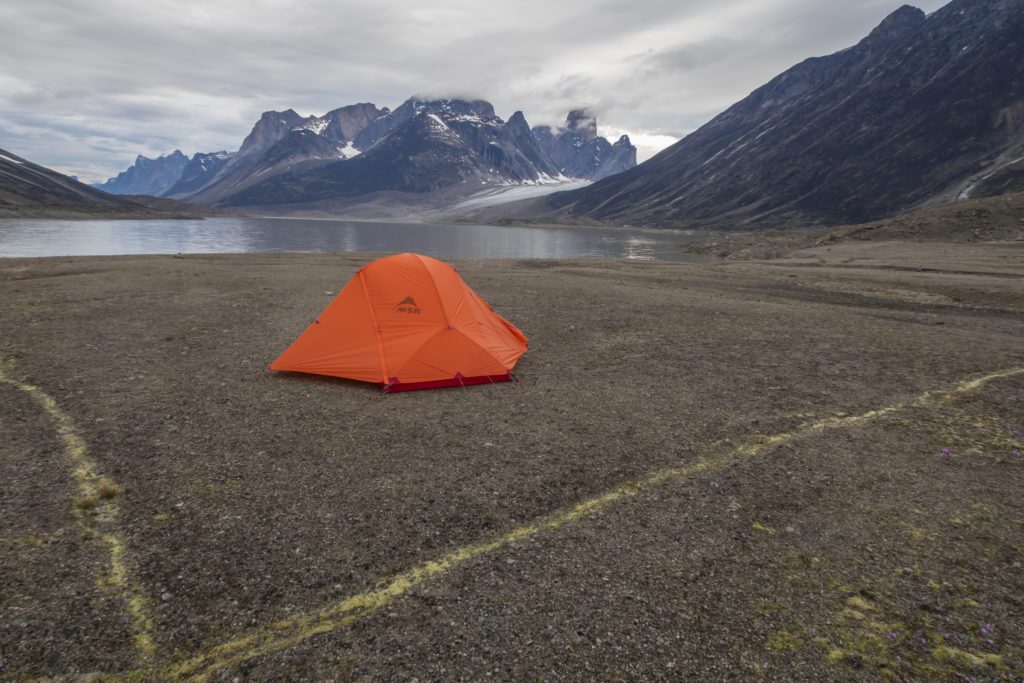MSR Access 2 Tent Review from Baffin Island

A quick Google search for “World’s Best Hiking” or “Top 10 Hikes” will consistently deliver a common result, the incredible Akshayuk Pass in Auyuittuq National Park on Canada’s Baffin Island. The hike is a remote 100 km trek through a glacial valley with some of the most incredible landscapes on earth. There are no communities or roads, and the arctic tundra is vast and harsh. Not a place for the unprepared.
In gearing up for our August trip, I was looking for a tent that had some extra weather resistance — better strength in wind, and a bit more heat retention. Also, and most critically, I wanted something that would be light enough to carry on my back for 10 days. The big hurdle for a remote trip of this duration is carrying enough food and fuel to meet caloric needs, so everything else must be as light as possible. The MSR Access 2 seemed to be just the thing.
MSR positions the Access 2 as the “ultimate shelter for backcountry skiers, splitboarders and snowshoers”—it is lightweight and packable, but warmer than a 3-season tent. Burly materials make for a secure shelter that weighs in at a reasonable 3 lbs 10 oz (1.64 kg).
Nowhere near ultralight standards—MSRs lightest 2-person backpacking tent is almost exactly half the weight—but just 3 oz more than the ever popular Hubba Hubba. Two small mesh windows help to keep in the heat and we really appreciated the extra few degrees on cold mornings. This also means that ventilation is limited, making the Access 2 less ideal as an all-season tent.
The Akshayuk Pass is a valley that extends between two deep fjords, and is dwarfed on either side by the vast Penny Ice Cap. Cold air from the glaciers above drops down into the valley and produces both mercurial weather and frequent high winds.
The general rule of thumb here is to camp in the lee of a large boulder, because at any time, winds can pick up and threaten to blow you away. Indeed, one careless evening, I left our cookset outside overnight and found all of it missing in the morning. Half an hour of downwind exploration recovered most of it.
The Access 2 withstood a few nights of VERY intense wind, and while the well-placed guy points provided great peace-of-mind, we found the tent to be particularly noisy. Rubberized reinforcement on the fly tended to rub against the junctions of the frame and made an unpleasant squeaking sound.
Perhaps a bit of tape over the frame would eliminate that. The Easton® Syclone poles are, nonetheless, exceptionally strong and break resistant in extreme conditions.
Setup, as with most MSR shelters, is easy and fast. We pitched the Access 2 in high winds and were able to get the job done quickly and without stress. Remember to put the peg bag in your pocket!
I also have an older version of MSR’s Hubba Hubba, which has a similar structure, but minus the additional spreader pole of the Access 2. MSR has reconfigured its door zippers so they are no longer in the centre, but off to the side of the two vestibules. This takes some strain off the fly and makes for more usable storage space.
The Access 2 is well designed and structurally sturdy, yet light enough for to carry on remote trips. At $700 CDN, it is not a tent for general all-round use, but when you need something a little heftier, this gets the job done.



